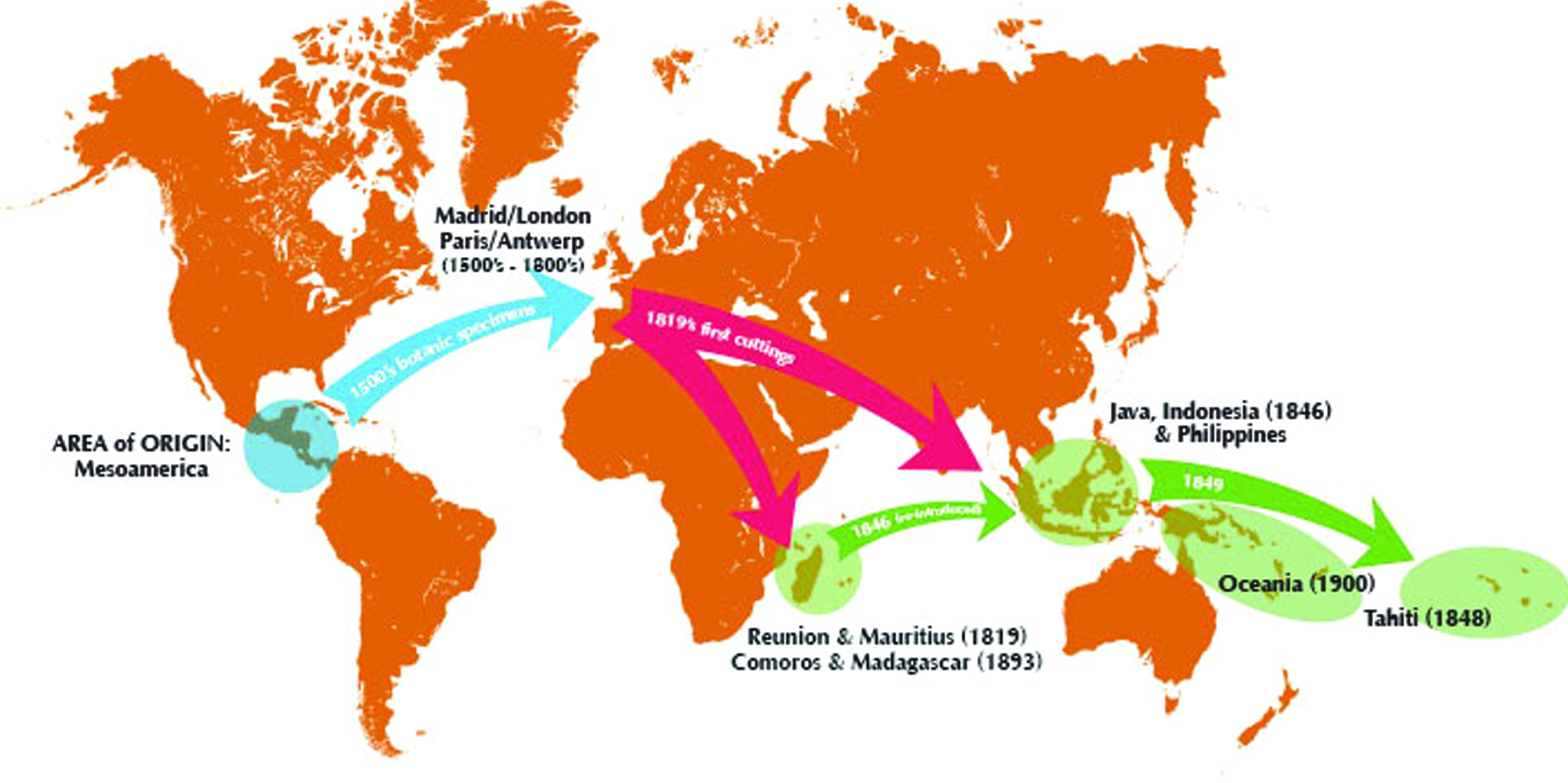b l o g
m a y 2 0 2 1

The vanilla plant’s area of origin, its migration to Europe and subsequent areas of colonisation/distribution
By Piero Bianchessi, Former Owner and Operator of Venui Vanilla
Vanilla is indigenous of Mesoamerica: mainly south-eastern Mexico, Guatemala and other parts of Central America.
Around the 16th century the Totonac people living on the east coast of Mexico (the Vera Cruz region) harvest the beans from the vanilla orchid growing wild on the humid coastline. They had been doing so for centuries.
When the Aztecs conquered the Totonacs, they soon developed a taste for the newly discovered beans used as a sweetener for a cocoa drink, and forced the Totonacs to pay tribute by sending vanilla to the Aztec capital Tenochtitlan. The vanilla ‘discovered’ by the Spanish conquistador Hernando Cortez (1518) was probably part of one of the Totonac tributes.
Vanilla then began its long and slow journey around the world, first to the court in Madrid (early 1500s), where for a number of decades it was used as a flavoring for a cocoa drink exclusively for the King and the nobility. However, by the end of the 16thcentury, the French and the English were able to obtain beans on a regular basis, and by 1602 Hugh Morgan (Queen Elizabeth I’s apothecary) suggested the use of vanilla in its own right. At this time Mexico was the only supplier of vanilla beans, and remained so until about 1860.
Meanwhile throughout the 16th and 17th centuries there was high demand for the exotic vanilla plant, particularly in Paris and London. During this period (probably before 1730) vanilla cuttings were smuggled into the French and British capitals, where they were kept in botanical gardens like the famous Charles Greville collection at Paddington (circa 1807).
Compelled by the increasing demand for vanilla both entrepreneurs and plant collectors attempted to grow the plants from cuttings in recently colonized countries with similar tropical climatic conditions to vanilla’s place of origin. In 1819 two plants were sent from Antwerp to Java, where one plant survived and bore flowers – but no fruit. Vanilla cuttings were also shipped by French entrepreneurs to the Reunion and Mauritius islands and to Martinique and Guadalupe in the French Antilles in 1839. While the plantations in these countries began to develop they did not produce sufficient crops.
Finally, in 1842 Edmond Albius, a 12 year old slave in Reunion Island, managed to hand pollinate vanilla for the first time. This was the beginning of the commercial success of vanilla. With the pollination technique perfected vanilla cultivation was reintroduced in Java (Indonesia) in 1846, and from there it travelled to Manila (Philippines). In 1848 a Mr Hamelin brought some plants from the Philippines to Tahiti. By the end of the 19th century the vanilla plants had reached a large number of countries including Seychelles (1866), Comoros and Madagascar (1893) and Uganda (via Ceylon) in 1912. In 1898 Reunion, Madagascar and Comoros produced a combined total of 200 tonnes of cured vanilla.
